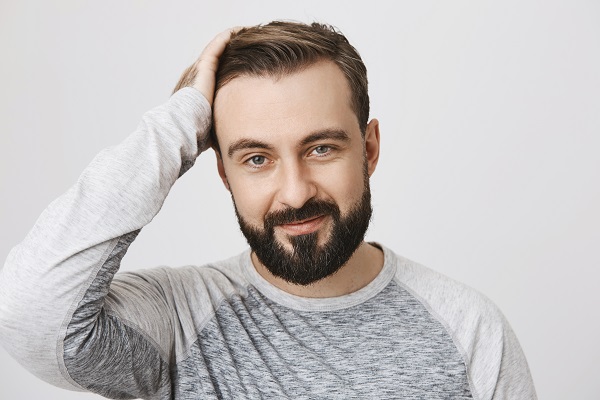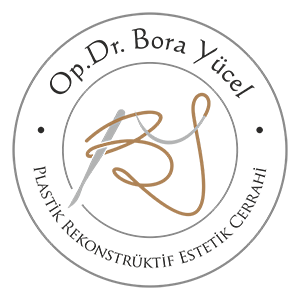
The appearance of the individual changes considerably due to hair loss. This may cause the individual to feel unhappy, asocial and old. It is possible to get rid of the negative consequences of hair loss with hair transplantation.
What is Hair Transplantation?
Hair transplantation Turkey is an effective treatment that permanently solves this problem of those who experience hair loss for various reasons. The transplantation of the patient's own hair follicles from the area with hair density to the parts with hair loss is called hair transplantation.
Hair transplantation usually starts with the removal of the individual's own hair follicles from the nape of the neck. It is completed on the same day by transplanting the hair follicles to the areas with balding or intense hair loss. The main purpose of hair transplantation in men and hair transplantation in women is to restore the lost hair to the individual and to make the individual feel good by capturing the natural hair appearance.
Hair transplantation Turkey is a very popular procedure for men and women who want to see themselves better and more beautiful like other aesthetic procedures (rhinoplasty, breast augmentation, breast lift, breast lift, breast reduction, gynecomastia, liposuction, tummy tuck).
How does hair transplant work in Turkey?
Hair transplantation is mostly performed by two methods. These are FUE (Follicular Unit Extraction) and FUT (Follicular Unit Transplantation) methods.
FUE Method
In this method, which is known by the initials of Follicular Unit Extraction, hair follicles are taken one by one from the area with hair density and placed one by one in the area to be transplanted. Since the incisions in this method are very small, the healing process is shorter.
FUT Method
In the FUT method, the scalp is taken from the hairy area, usually from the nape of the neck, in the form of a strip. The hair follicles in the skin are separated. These separated hair follicles are transplanted to the area to be transplanted. This method may require stitches.
In the Fut method, hair follicles are transferred in clusters. Hair follicles contain 1 to 4 hairs. Hair clusters are created with a microscope.
Both methods are performed by an experienced, specialised surgeon. Both are performed under local anaesthesia. In both, when the necessary care is taken after the procedure, the hair grows naturally and the result of the procedure is permanent.
What are the stages of hair transplantation Turkey?

Hair transplantation offers effective results to individuals who want to get rid of hair loss problem. The individual who undergoes hair transplantation regains permanent, natural hair.
Individuals who are considering hair transplantation should first consult a specialist to find out whether they have a healthy and sufficient number of hair donors for transplantation. Whether the client is suitable for the procedure should be evaluated by the specialist.
Hair transplantation is performed by a specialist surgeon in a clinical environment.
After the procedure, the instructions to be followed by the patient are explained in detail. The patient is requested to perform the necessary care without interruption. (Although these cares vary depending on the system of the doctor and the hair transplantation centre, they can generally be listed as: use of special shampoo, vitamin intake, use of special care creams, PRP application at certain intervals).
The patient's hair transplantation area is checked with certain routines and followed up after the procedure. Generally, at the end of one year, the hair in the hair transplantation area regains its desired state.
After Hair Transplant
There are some things to be done after hair transplantation to increase the success of the procedure and accelerate the healing process:
- You should lie in a slightly upright position for the first three days after hair transplantation.
- During the recovery period, the sun should be avoided, you should not stand too much, the hair transplanted area should not be itchy, alcohol and smoking should be avoided for two to three weeks after transplantation.
- The instructions recommended by the doctor should be strictly followed.
- Necessary care should not be neglected.
- Routine follow-ups should not be neglected.
Recovery After Hair Transplantation
Full recovery after hair transplantation may show individual differences. The patient's behaviours that support recovery accelerate the process.
The recovery period after hair transplantation is usually as follows:
First Days After Hair Transplantation
In the first few days after the hair transplantation procedure, the scalp may turn red, there may be slight bleeding in some areas and the transplanted area and some parts of the face may swell. There may be a feeling of pain and tension due to the procedure. Pain can be controlled with painkillers recommended by your doctor. During this period, it is very important to follow the doctor's recommendations exactly, not to touch the relevant area, and to rest at home.
First Week After Hair Transplant
In the first week, crusting occurs in the area where hair is transplanted and hair is removed. The first week after hair transplantation is the period that requires the most careful care. Doctor's recommendations should be followed. During this period, heavy exercises should not be done, alcohol and smoking should be avoided, and direct sunlight should not be exposed.
First Month After Hair Transplant
Crusting ends in the first month. Redness and swelling subsides. The transplanted hair falls out in the first month after hair transplantation. This is a natural process. Hair regrows from the transplanted area. During the healing period, the hair begins to grow slowly.
First Three Months After Hair Transplantation
After shedding for the first three months, the new hair continues to grow slowly. In the meantime, the care recommended by the doctor should be carried out without interruption to ensure that the results of hair transplantation are more satisfactory.
Sixth Month After Hair Transplantation
In the first six months, hair transplant results are usually quite good. Until the sixth month, men may have to go to the barber for a haircut several times. The growing hair becomes thicker and denser. This restores the individual's natural hair appearance. Full results are obtained between six months and one year after hair transplantation.
It is very important to strictly follow the doctor's recommendations throughout the whole process. At the end of one year, the patient regains his/her natural hair for life.
Advantages of Hair Transplantation
- In this permanent procedure, the transplanted hair grows naturally.
- Since the person's own hair is used for hair transplantation, the transplanted hair looks natural.
- The procedure is generally safe and the risk is low enough to be called risk-free.
- With hair transplantation, the individual becomes younger looking, more social and more self-confident.
Who is suitable for hair transplantation?
Hair transplantation is an aesthetic operation that men prefer as frequently as rhinoplasty and gynaecomastia in recent years. Hair transplantation can be performed on individuals with baldness or significant hair thinning in certain areas. Some of the criteria that an individual must have in order to undergo hair transplantation are as follows:
- The general health status of the individual should be good,
- The individual has enough hair in the donor areas for hair transplantation,
- The individual should be in the age range suitable for hair transplantation.
Is Hair Transplantation Painful?
Local anaesthesia is used to prevent the patient from suffering during the procedure.
Pain may be experienced in the first days after transplantation. These pains can be controlled with prescribed painkillers.
How Many Hours Does Hair Transplantation Take?
Hair transplantation is a procedure that takes at least 5 and at most 10 hours depending on the number of follicles to be transplanted and the technique used.
Hair Transplant FUE or FUT?
When the two methods are compared:
In FUE method, there is no scar, in FUT method, there is a scar due to stitches after the procedure.
In FUE method, minimum 2500 and maximum 4000 grafts can be transplanted in one session. Up to 5000 grafts can be transplanted in FUE method.
The procedure takes 8-10 hours in FUE method and 5-7 hours in FUT method.
In both methods, hair transplantation results are generally very good and make the patient and the patient's relatives happy.
The most important difference of these two methods is the way the hair follicles are taken.
Is Hair Transplantation Permanent?
Hair transplanted hair is resistant to hair loss due to genetic predisposition. This is why hair transplantation results are permanent.
What are the factors affecting the permanence of hair transplantation?
Hair transplantation is usually a procedure with permanent results. However, there are some factors that affect the permanence of hair transplantation. These are
The experience of the surgeon performing hair transplantation,
The quality of the hair transplantation technique and equipment used,
General health status and age of the individual undergoing hair transplantation
It can be listed as the individual not acting in accordance with the instructions given after hair transplantation and not taking care of hair care.
How many days after hair transplantation the scabs fall off?
After hair transplantation, the healing period begins. 2-3 days after hair transplantation, crusting occurs in the transplanted and donor areas. This crusting increases day by day. On the 10th day, excess crusts are shed by washing.
The hair transplantation procedure performed by an experienced surgeon with a good team using the right technique and the right equipment is permanent and natural looking for a lifetime if the patient follows the necessary instructions.

